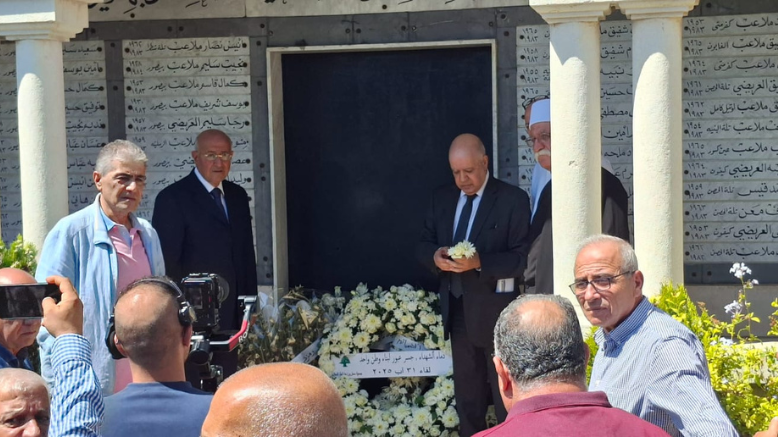“From our martyrs to your martyrs”
- A Story of Reconciliation in Lebanon
Two years ago, I traveled to the Druze village of Baysour, perched in the mountains of Lebanon, to deliver a training session to a group of former fighters—Druze and Christian—who had once stood on opposite sides of the Lebanese Civil War (1975–1990). They had now come together to train as guides for a Fighters for Peace mobile app, Greenline, which guides people wanting to follow a trail along the historical frontlines of the war, transforming once-divided landscapes into spaces for remembrance and learning.
When I arrived that morning, I took the opportunity for a walk through the village. Not far from the center, I came upon a powerful and sobering sight: a decommissioned military cannon, and next to it, a large memorial board displaying photographs of 142 Druze martyrs from Baysour who had fallen during the war. Nearby stood a mausoleum, with their names engraved and surrounded by Muslim prayers.
I stood still for a long while.
Compelled by the weight of that place, I offered a prayer—not only for the Druze martyrs honored there, but also for the Christian victims of the war. In that moment, a simple but powerful thought took root in me: What if one day there were a shared monument where all the martyrs of the Mountain—Druze and Christian alike—could be remembered together?
Two Years Later:
In August 2025, Fighters for Peace completed its third Greenline trail, this time covering a different frontline. Yet for its public launch, we decided to return to Baysour—a symbolic choice, tied to the memory of that first prayer and the seed it planted.
The event brought together former enemies, civil society members, and local residents. Among the speakers were a prominent Druze leader and former minister, and a former commander of the Christian Lebanese Forces militia. I also spoke, alongside other representatives, under the theme: “One More Step Toward Grassroots Reconciliation.”
The days leading up to the event were not without tension. Some locals voiced strong resistance, fearing that the initiative would dishonor their martyrs. But through dialogue and persistence, we managed to move forward, grounded in respect for all who had fallen.
A Ceremony of Shared Memory
At the end of the launch, we invited all attendees to join us in visiting the Baysour Martyrs’ Monument. We had prepared a floral tribute, labeled with a message that expressed the heart of our work: “The blood of the martyrs is a bridge for building a unified nation.”
The ceremony at the Monument began with a prayer led by six Druze Sheikhs, followed by a moment of silence and a few heartfelt words from those present. I spoke directly to the martyrs, recalling the quiet promise I made two years earlier—to let the world know about them, to remember them, and to pray for them.
I also reaffirmed a commitment: to visit and honor together with all the participants the memory of Christian martyrs in their villages as well. Only through balanced remembrance can reconciliation take root.
Together with the Druze leader, I laid the floral wreath at the monument.
A Gesture That Crossed the Divide
As I turned to leave, I was approached by Sheikh Ali Nassar Malaeb, one of the Druze religious leaders present. With great care, he removed three flowers from our wreath and handed them to me.
“These flowers,” he said, “are from our martyrs to your martyrs.”
In that moment—through a gesture so simple, yet so profound—the barriers between past enemies seemed to soften more.

Walking the Path of Memory
Following the ceremony, forty participants from both Christian and Druze communities took to the trail. They walked together along the newly marked frontline, listening to the stories of the war that once tore their communities apart.
What was once a dividing line has now become a pathway of memory and understanding.
A Future Built on Shared Remembrance
In a country where the wounds of war still run deep, true reconciliation does not come from forgetting—it comes from remembering together. The Greenline trails, the ceremonies of shared mourning, and the unlikely friendships born from former enemies are signs that another Lebanon is possible.
The path is not easy. Resistance and suspicion remain. But step by step, prayer by prayer, word by word, we walk toward one another—towards a future where history is no longer a weapon, but a bridge.
Assaad Chaftari